F_История и предмет_Эатпы и методы исслед.ppt
- Количество слайдов: 42
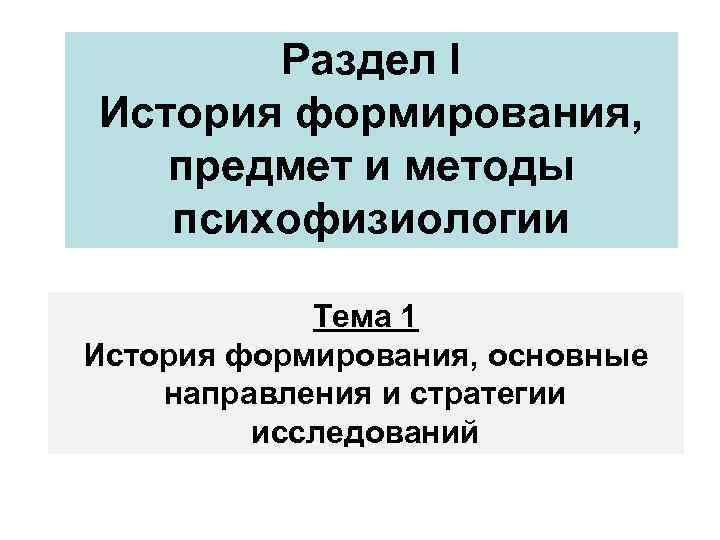 Раздел I История формирования, предмет и методы психофизиологии Тема 1 История формирования, основные направления и стратегии исследований
Раздел I История формирования, предмет и методы психофизиологии Тема 1 История формирования, основные направления и стратегии исследований
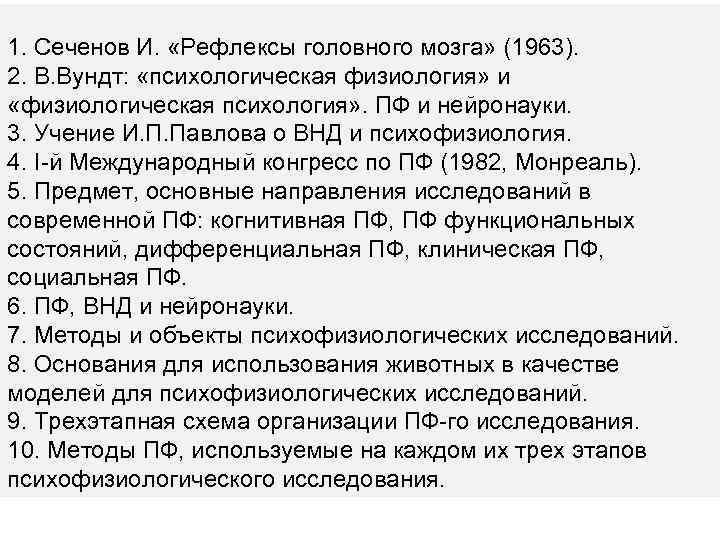 1. Сеченов И. «Рефлексы головного мозга» (1963). 2. В. Вундт: «психологическая физиология» и «физиологическая психология» . ПФ и нейронауки. 3. Учение И. П. Павлова о ВНД и психофизиология. 4. I-й Международный конгресс по ПФ (1982, Монреаль). 5. Предмет, основные направления исследований в современной ПФ: когнитивная ПФ, ПФ функциональных состояний, дифференциальная ПФ, клиническая ПФ, социальная ПФ. 6. ПФ, ВНД и нейронауки. 7. Методы и объекты психофизиологических исследований. 8. Основания для использования животных в качестве моделей для психофизиологических исследований. 9. Трехэтапная схема организации ПФ-го исследования. 10. Методы ПФ, используемые на каждом их трех этапов психофизиологического исследования.
1. Сеченов И. «Рефлексы головного мозга» (1963). 2. В. Вундт: «психологическая физиология» и «физиологическая психология» . ПФ и нейронауки. 3. Учение И. П. Павлова о ВНД и психофизиология. 4. I-й Международный конгресс по ПФ (1982, Монреаль). 5. Предмет, основные направления исследований в современной ПФ: когнитивная ПФ, ПФ функциональных состояний, дифференциальная ПФ, клиническая ПФ, социальная ПФ. 6. ПФ, ВНД и нейронауки. 7. Методы и объекты психофизиологических исследований. 8. Основания для использования животных в качестве моделей для психофизиологических исследований. 9. Трехэтапная схема организации ПФ-го исследования. 10. Методы ПФ, используемые на каждом их трех этапов психофизиологического исследования.
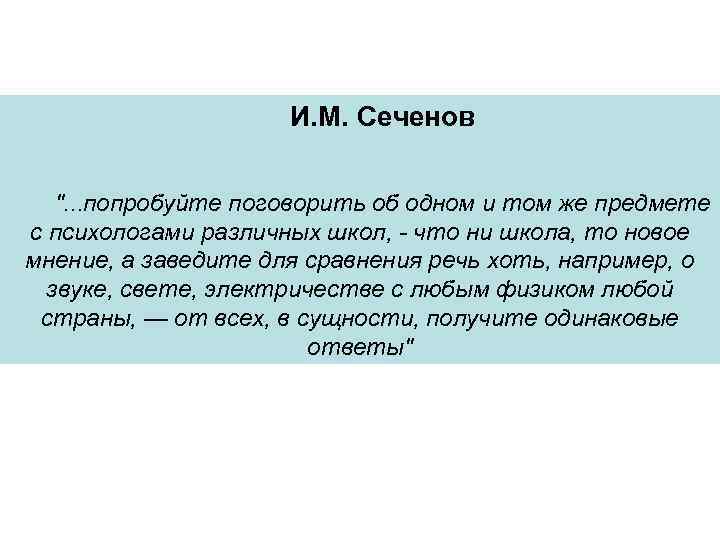 И. М. Сеченов ". . . попробуйте поговорить об одном и том же предмете с психологами различных школ, - что ни школа, то новое мнение, а заведите для сравнения речь хоть, например, о звуке, свете, электричестве с любым физиком любой страны, — от всех, в сущности, получите одинаковые ответы"
И. М. Сеченов ". . . попробуйте поговорить об одном и том же предмете с психологами различных школ, - что ни школа, то новое мнение, а заведите для сравнения речь хоть, например, о звуке, свете, электричестве с любым физиком любой страны, — от всех, в сущности, получите одинаковые ответы"
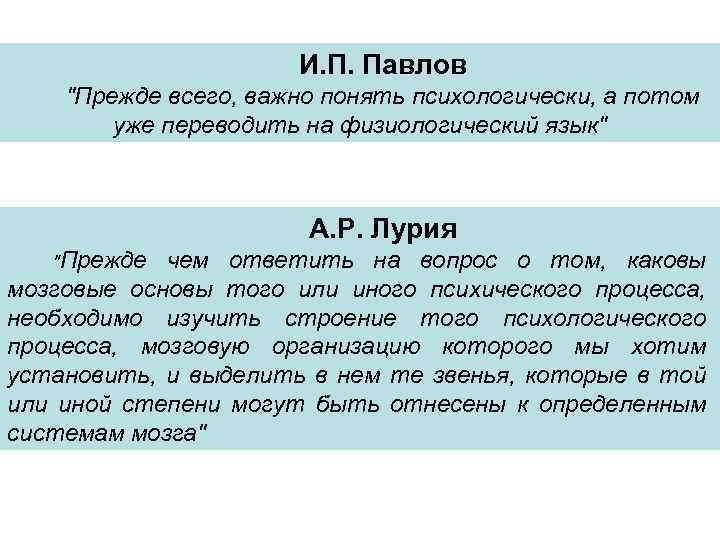 И. П. Павлов "Прежде всего, важно понять психологически, а потом уже переводить на физиологический язык" А. Р. Лурия "Прежде чем ответить на вопрос о том, каковы мозговые основы того или иного психического процесса, необходимо изучить строение того психологического процесса, мозговую организацию которого мы хотим установить, и выделить в нем те звенья, которые в той или иной степени могут быть отнесены к определенным системам мозга"
И. П. Павлов "Прежде всего, важно понять психологически, а потом уже переводить на физиологический язык" А. Р. Лурия "Прежде чем ответить на вопрос о том, каковы мозговые основы того или иного психического процесса, необходимо изучить строение того психологического процесса, мозговую организацию которого мы хотим установить, и выделить в нем те звенья, которые в той или иной степени могут быть отнесены к определенным системам мозга"
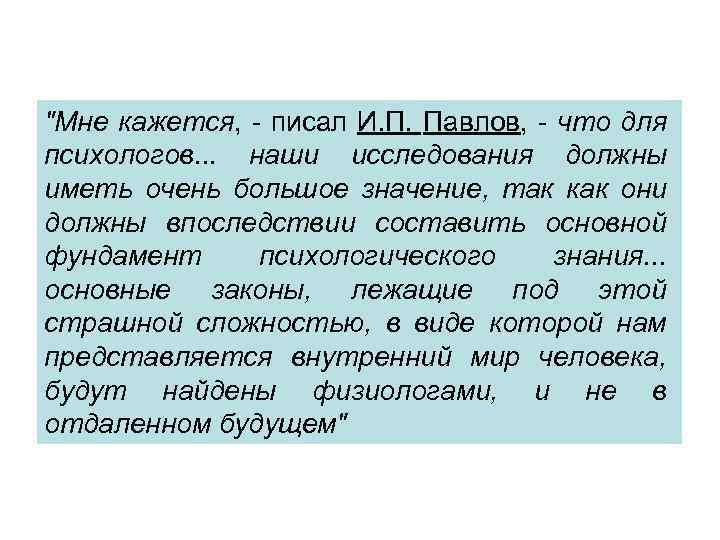 "Мне кажется, - писал И. П. Павлов, - что для психологов. . . наши исследования должны иметь очень большое значение, так как они должны впоследствии составить основной фундамент психологического знания. . . основные законы, лежащие под этой страшной сложностью, в виде которой нам представляется внутренний мир человека, будут найдены физиологами, и не в отдаленном будущем"
"Мне кажется, - писал И. П. Павлов, - что для психологов. . . наши исследования должны иметь очень большое значение, так как они должны впоследствии составить основной фундамент психологического знания. . . основные законы, лежащие под этой страшной сложностью, в виде которой нам представляется внутренний мир человека, будут найдены физиологами, и не в отдаленном будущем"
 «International Organization of Psychophysiology» , associated with United Nations (New-York) The emblem of the Organization shall consist of a human being with open arms embracing the biosphere. The biosphere shall be surrounded by two branches of thick olive leaves, and on top shall be affixed the initials of the Organization
«International Organization of Psychophysiology» , associated with United Nations (New-York) The emblem of the Organization shall consist of a human being with open arms embracing the biosphere. The biosphere shall be surrounded by two branches of thick olive leaves, and on top shall be affixed the initials of the Organization
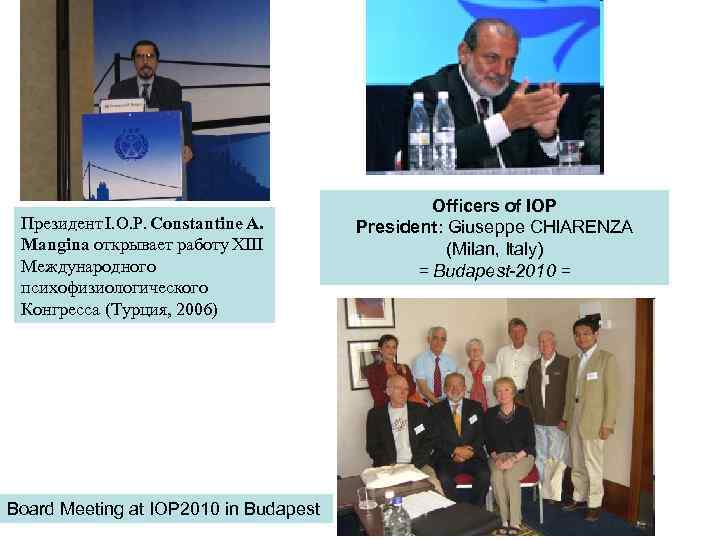 Президент I. O. P. Constantine A. Mangina открывает работу XIII Международного психофизиологического Конгресса (Турция, 2006) Board Meeting at IOP 2010 in Budapest Officers of IOP President: Giuseppe CHIARENZA (Milan, Italy) = Budapest-2010 =
Президент I. O. P. Constantine A. Mangina открывает работу XIII Международного психофизиологического Конгресса (Турция, 2006) Board Meeting at IOP 2010 in Budapest Officers of IOP President: Giuseppe CHIARENZA (Milan, Italy) = Budapest-2010 =
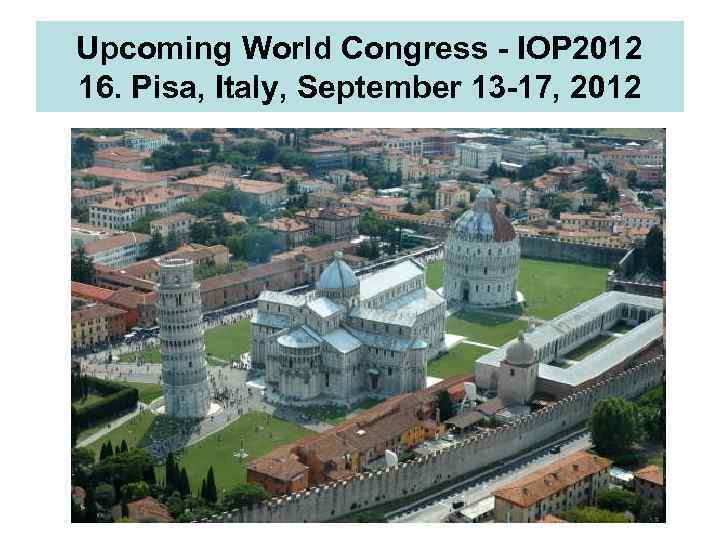 Upcoming World Congress - IOP 2012 16. Pisa, Italy, September 13 -17, 2012
Upcoming World Congress - IOP 2012 16. Pisa, Italy, September 13 -17, 2012
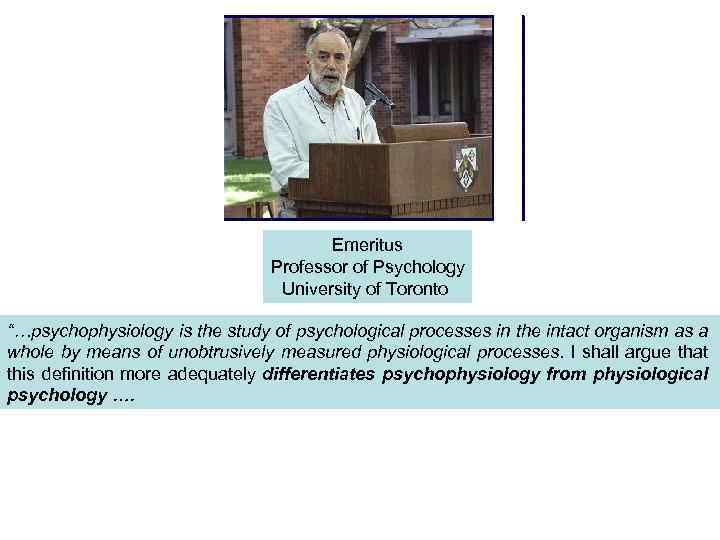 Emeritus Professor of Psychology University of Toronto “…psychophysiology is the study of psychological processes in the intact organism as a whole by means of unobtrusively measured physiological processes. I shall argue that this definition more adequately differentiates psychophysiology from physiological psychology ….
Emeritus Professor of Psychology University of Toronto “…psychophysiology is the study of psychological processes in the intact organism as a whole by means of unobtrusively measured physiological processes. I shall argue that this definition more adequately differentiates psychophysiology from physiological psychology ….
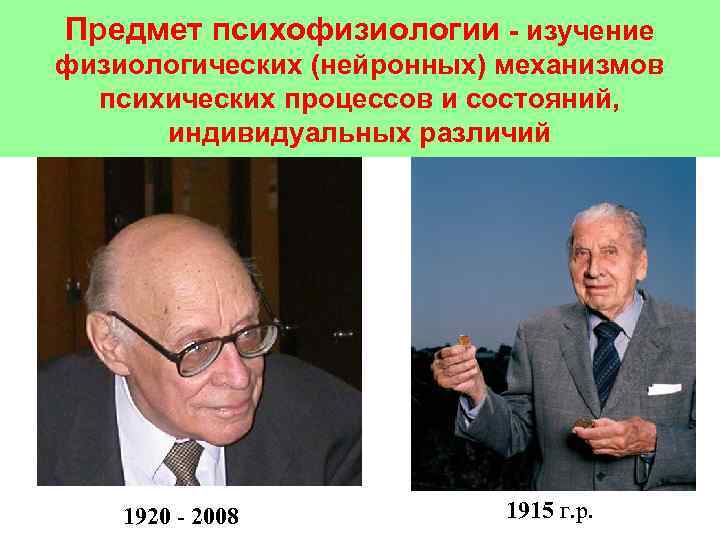 Предмет психофизиологии - изучение физиологических (нейронных) механизмов психических процессов и состояний, индивидуальных различий 1920 - 2008 1915 г. р.
Предмет психофизиологии - изучение физиологических (нейронных) механизмов психических процессов и состояний, индивидуальных различий 1920 - 2008 1915 г. р.
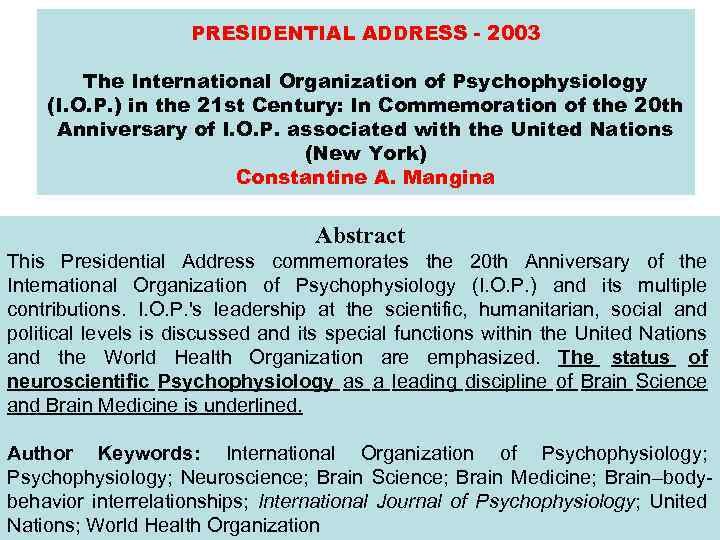 PRESIDENTIAL ADDRESS - 2003 PRESIDENTIAL ADDRESS The International Organization of Psychophysiology (I. O. P. ) in the 21 st Century: In Commemoration of the 20 th Anniversary of I. O. P. associated with the United Nations (New York) Constantine A. Mangina Abstract This Presidential Address commemorates the 20 th Anniversary of the International Organization of Psychophysiology (I. O. P. ) and its multiple contributions. I. O. P. 's leadership at the scientific, humanitarian, social and political levels is discussed and its special functions within the United Nations and the World Health Organization are emphasized. The status of neuroscientific Psychophysiology as a leading discipline of Brain Science and Brain Medicine is underlined. Author Keywords: International Organization of Psychophysiology; Neuroscience; Brain Science; Brain Medicine; Brain–bodybehavior interrelationships; International Journal of Psychophysiology; United Nations; World Health Organization
PRESIDENTIAL ADDRESS - 2003 PRESIDENTIAL ADDRESS The International Organization of Psychophysiology (I. O. P. ) in the 21 st Century: In Commemoration of the 20 th Anniversary of I. O. P. associated with the United Nations (New York) Constantine A. Mangina Abstract This Presidential Address commemorates the 20 th Anniversary of the International Organization of Psychophysiology (I. O. P. ) and its multiple contributions. I. O. P. 's leadership at the scientific, humanitarian, social and political levels is discussed and its special functions within the United Nations and the World Health Organization are emphasized. The status of neuroscientific Psychophysiology as a leading discipline of Brain Science and Brain Medicine is underlined. Author Keywords: International Organization of Psychophysiology; Neuroscience; Brain Science; Brain Medicine; Brain–bodybehavior interrelationships; International Journal of Psychophysiology; United Nations; World Health Organization
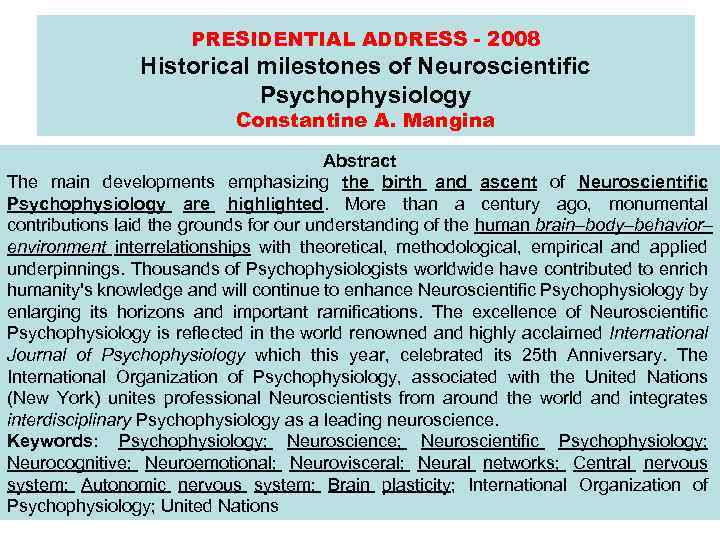 PRESIDENTIAL ADDRESS - 2008 Historical milestones of Neuroscientific Psychophysiology Constantine A. Mangina Abstract The main developments emphasizing the birth and ascent of Neuroscientific Psychophysiology are highlighted. More than a century ago, monumental contributions laid the grounds for our understanding of the human brain–body–behavior– environment interrelationships with theoretical, methodological, empirical and applied underpinnings. Thousands of Psychophysiologists worldwide have contributed to enrich humanity's knowledge and will continue to enhance Neuroscientific Psychophysiology by enlarging its horizons and important ramifications. The excellence of Neuroscientific Psychophysiology is reflected in the world renowned and highly acclaimed International Journal of Psychophysiology which this year, celebrated its 25 th Anniversary. The International Organization of Psychophysiology, associated with the United Nations (New York) unites professional Neuroscientists from around the world and integrates interdisciplinary Psychophysiology as a leading neuroscience. Keywords: Psychophysiology; Neuroscience; Neuroscientific Psychophysiology; Neurocognitive; Neuroemotional; Neurovisceral; Neural networks; Central nervous system; Autonomic nervous system; Brain plasticity; International Organization of Psychophysiology; United Nations
PRESIDENTIAL ADDRESS - 2008 Historical milestones of Neuroscientific Psychophysiology Constantine A. Mangina Abstract The main developments emphasizing the birth and ascent of Neuroscientific Psychophysiology are highlighted. More than a century ago, monumental contributions laid the grounds for our understanding of the human brain–body–behavior– environment interrelationships with theoretical, methodological, empirical and applied underpinnings. Thousands of Psychophysiologists worldwide have contributed to enrich humanity's knowledge and will continue to enhance Neuroscientific Psychophysiology by enlarging its horizons and important ramifications. The excellence of Neuroscientific Psychophysiology is reflected in the world renowned and highly acclaimed International Journal of Psychophysiology which this year, celebrated its 25 th Anniversary. The International Organization of Psychophysiology, associated with the United Nations (New York) unites professional Neuroscientists from around the world and integrates interdisciplinary Psychophysiology as a leading neuroscience. Keywords: Psychophysiology; Neuroscience; Neuroscientific Psychophysiology; Neurocognitive; Neuroemotional; Neurovisceral; Neural networks; Central nervous system; Autonomic nervous system; Brain plasticity; International Organization of Psychophysiology; United Nations
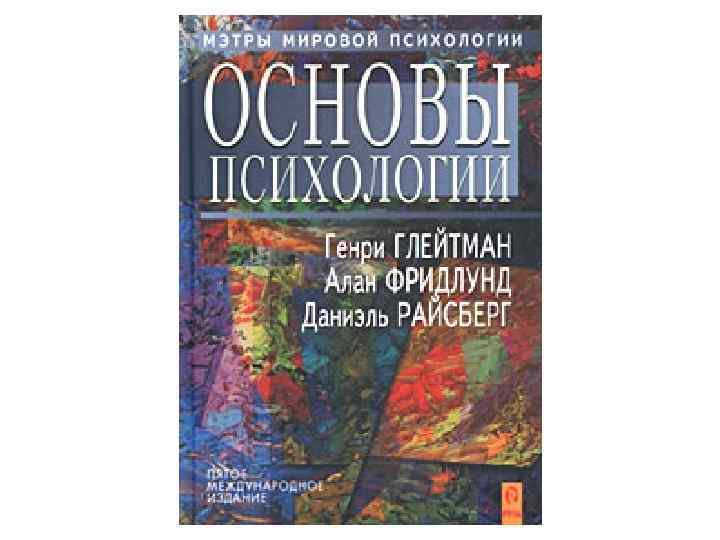
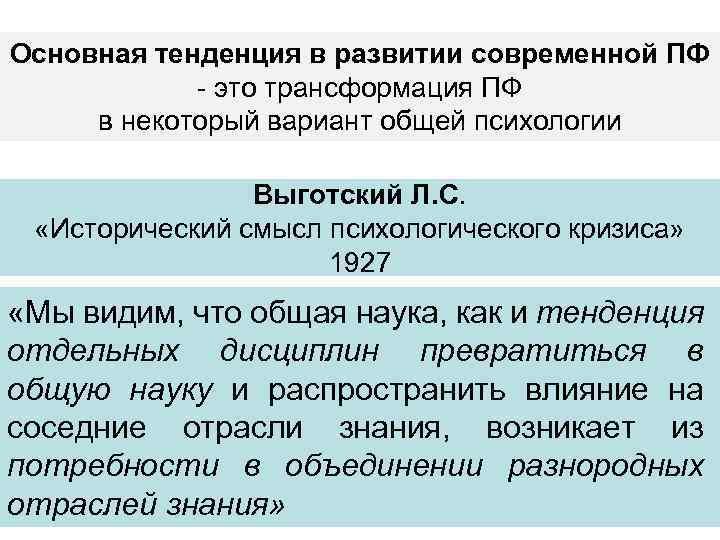 Основная тенденция в развитии современной ПФ - это трансформация ПФ в некоторый вариант общей психологии Выготский Л. С. «Исторический смысл психологического кризиса» 1927 «Мы видим, что общая наука, как и тенденция отдельных дисциплин превратиться в общую науку и распространить влияние на соседние отрасли знания, возникает из потребности в объединении разнородных отраслей знания»
Основная тенденция в развитии современной ПФ - это трансформация ПФ в некоторый вариант общей психологии Выготский Л. С. «Исторический смысл психологического кризиса» 1927 «Мы видим, что общая наука, как и тенденция отдельных дисциплин превратиться в общую науку и распространить влияние на соседние отрасли знания, возникает из потребности в объединении разнородных отраслей знания»
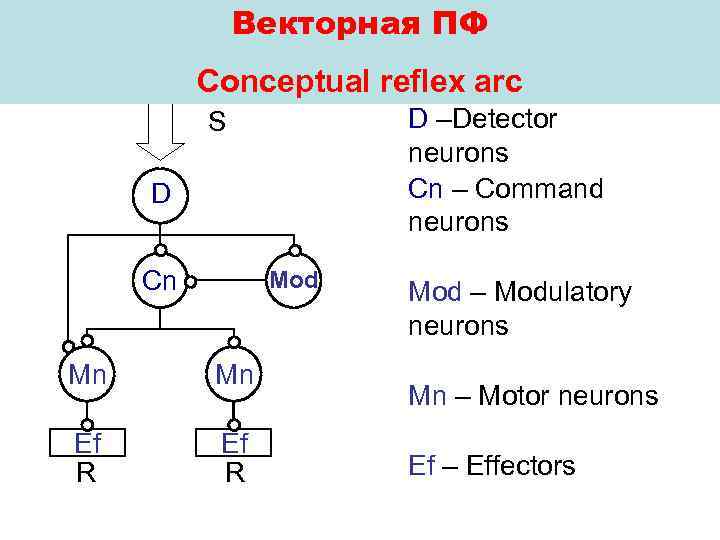 Векторная ПФ Conceptual reflex arc D –Detector neurons Cn – Command neurons S D Cn Моd Мn Мn Ef R Моd – Modulatory neurons Мn – Motor neurons Ef – Effectors
Векторная ПФ Conceptual reflex arc D –Detector neurons Cn – Command neurons S D Cn Моd Мn Мn Ef R Моd – Modulatory neurons Мn – Motor neurons Ef – Effectors
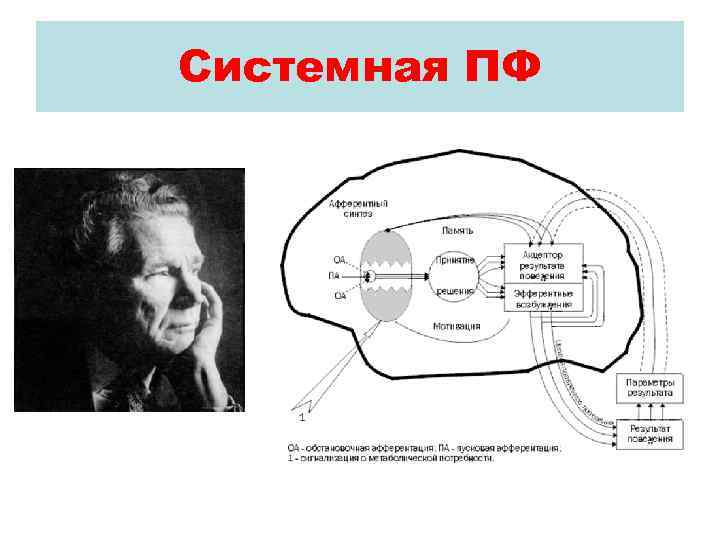 Системная ПФ
Системная ПФ
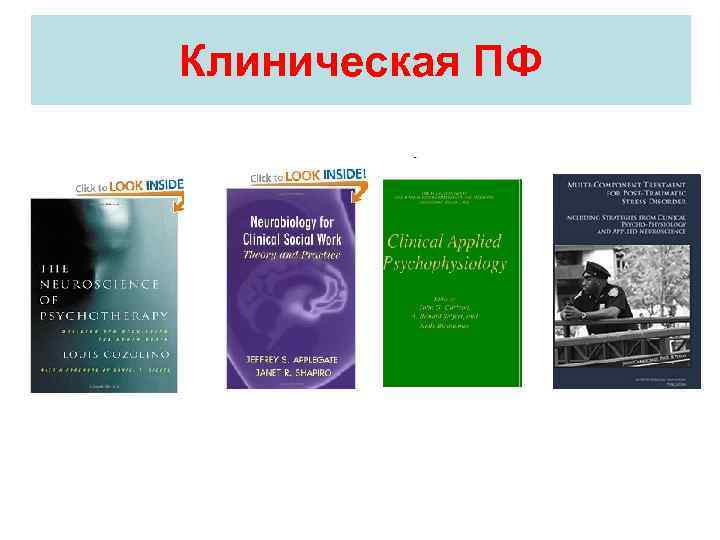 Клиническая ПФ
Клиническая ПФ
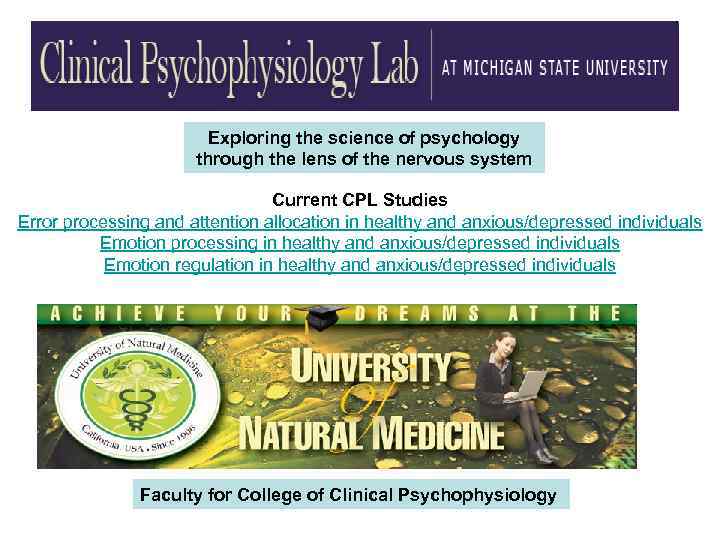 Exploring the science of psychology through the lens of the nervous system Current CPL Studies Error processing and attention allocation in healthy and anxious/depressed individuals Emotion processing in healthy and anxious/depressed individuals Emotion regulation in healthy and anxious/depressed individuals Faculty for College of Clinical Psychophysiology
Exploring the science of psychology through the lens of the nervous system Current CPL Studies Error processing and attention allocation in healthy and anxious/depressed individuals Emotion processing in healthy and anxious/depressed individuals Emotion regulation in healthy and anxious/depressed individuals Faculty for College of Clinical Psychophysiology
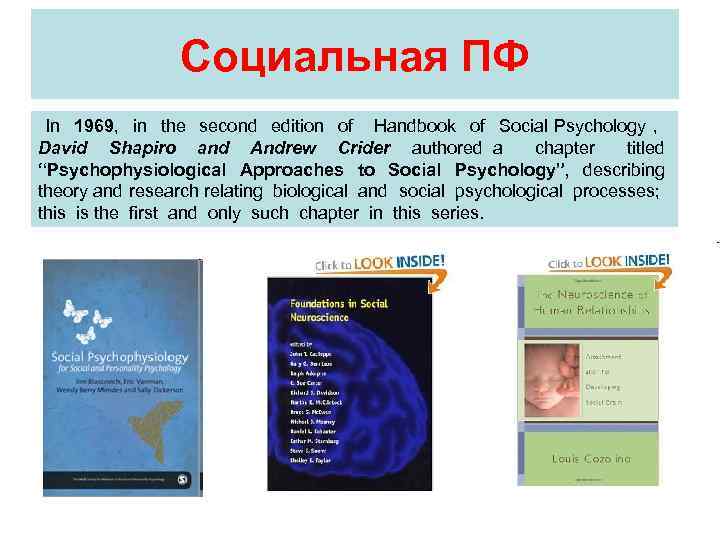 Cоциальная ПФ In 1969, in the second edition of Handbook of Social Psychology , David Shapiro and Andrew Crider authored a chapter titled “Psychophysiological Approaches to Social Psychology”, describing theory and research relating biological and social psychological processes; this is the first and only such chapter in this series.
Cоциальная ПФ In 1969, in the second edition of Handbook of Social Psychology , David Shapiro and Andrew Crider authored a chapter titled “Psychophysiological Approaches to Social Psychology”, describing theory and research relating biological and social psychological processes; this is the first and only such chapter in this series.
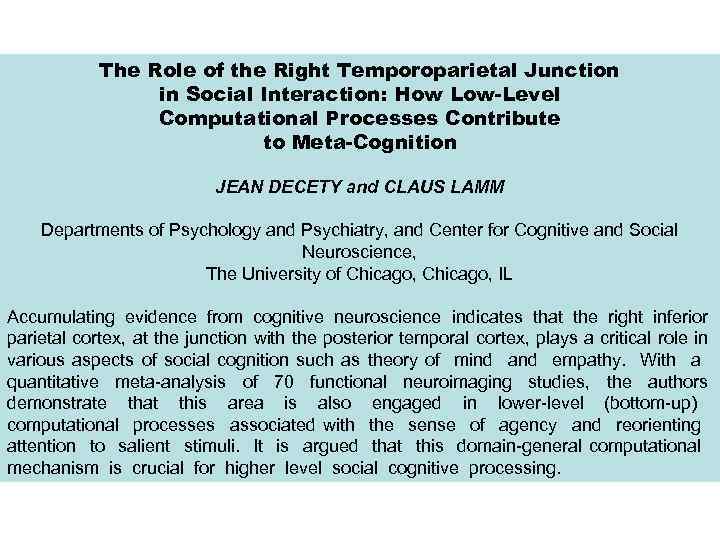 The Role of the Right Temporoparietal Junction in Social Interaction: How Low-Level Computational Processes Contribute to Meta-Cognition JEAN DECETY and CLAUS LAMM Departments of Psychology and Psychiatry, and Center for Cognitive and Social Neuroscience, The University of Chicago, IL Accumulating evidence from cognitive neuroscience indicates that the right inferior parietal cortex, at the junction with the posterior temporal cortex, plays a critical role in various aspects of social cognition such as theory of mind and empathy. With a quantitative meta-analysis of 70 functional neuroimaging studies, the authors demonstrate that this area is also engaged in lower-level (bottom-up) computational processes associated with the sense of agency and reorienting attention to salient stimuli. It is argued that this domain-general computational mechanism is crucial for higher level social cognitive processing.
The Role of the Right Temporoparietal Junction in Social Interaction: How Low-Level Computational Processes Contribute to Meta-Cognition JEAN DECETY and CLAUS LAMM Departments of Psychology and Psychiatry, and Center for Cognitive and Social Neuroscience, The University of Chicago, IL Accumulating evidence from cognitive neuroscience indicates that the right inferior parietal cortex, at the junction with the posterior temporal cortex, plays a critical role in various aspects of social cognition such as theory of mind and empathy. With a quantitative meta-analysis of 70 functional neuroimaging studies, the authors demonstrate that this area is also engaged in lower-level (bottom-up) computational processes associated with the sense of agency and reorienting attention to salient stimuli. It is argued that this domain-general computational mechanism is crucial for higher level social cognitive processing.
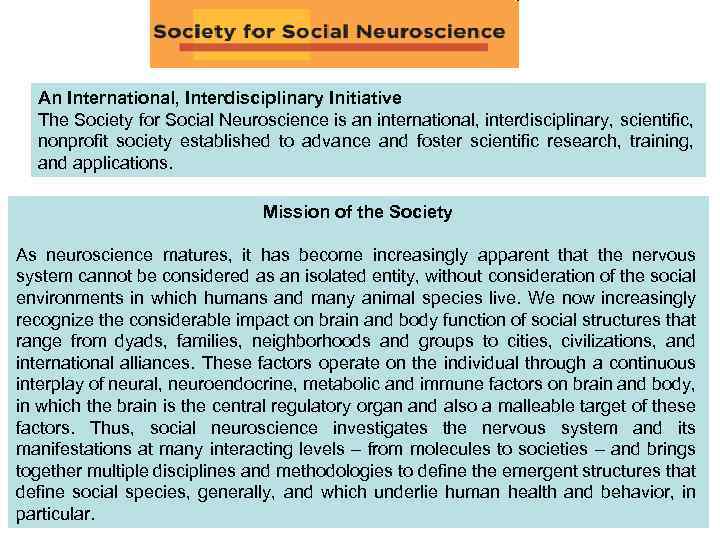 An International, Interdisciplinary Initiative The Society for Social Neuroscience is an international, interdisciplinary, scientific, nonprofit society established to advance and foster scientific research, training, and applications. Mission of the Society As neuroscience matures, it has become increasingly apparent that the nervous system cannot be considered as an isolated entity, without consideration of the social environments in which humans and many animal species live. We now increasingly recognize the considerable impact on brain and body function of social structures that range from dyads, families, neighborhoods and groups to cities, civilizations, and international alliances. These factors operate on the individual through a continuous interplay of neural, neuroendocrine, metabolic and immune factors on brain and body, in which the brain is the central regulatory organ and also a malleable target of these factors. Thus, social neuroscience investigates the nervous system and its manifestations at many interacting levels – from molecules to societies – and brings together multiple disciplines and methodologies to define the emergent structures that define social species, generally, and which underlie human health and behavior, in particular.
An International, Interdisciplinary Initiative The Society for Social Neuroscience is an international, interdisciplinary, scientific, nonprofit society established to advance and foster scientific research, training, and applications. Mission of the Society As neuroscience matures, it has become increasingly apparent that the nervous system cannot be considered as an isolated entity, without consideration of the social environments in which humans and many animal species live. We now increasingly recognize the considerable impact on brain and body function of social structures that range from dyads, families, neighborhoods and groups to cities, civilizations, and international alliances. These factors operate on the individual through a continuous interplay of neural, neuroendocrine, metabolic and immune factors on brain and body, in which the brain is the central regulatory organ and also a malleable target of these factors. Thus, social neuroscience investigates the nervous system and its manifestations at many interacting levels – from molecules to societies – and brings together multiple disciplines and methodologies to define the emergent structures that define social species, generally, and which underlie human health and behavior, in particular.
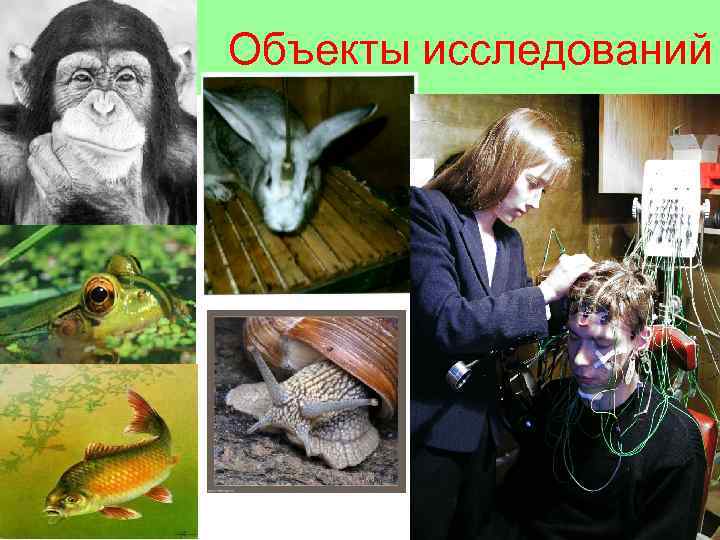 Объекты исследований
Объекты исследований
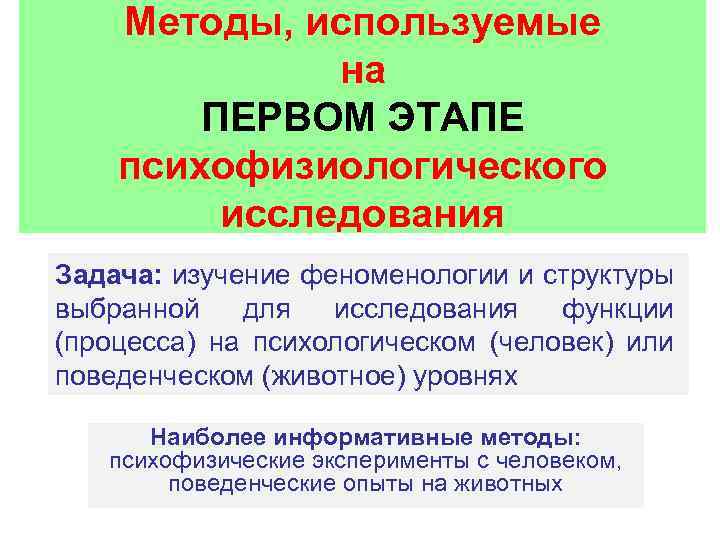 Методы, используемые на ПЕРВОМ ЭТАПЕ психофизиологического исследования Задача: изучение феноменологии и структуры выбранной для исследования функции (процесса) на психологическом (человек) или поведенческом (животное) уровнях Наиболее информативные методы: психофизические эксперименты с человеком, поведенческие опыты на животных
Методы, используемые на ПЕРВОМ ЭТАПЕ психофизиологического исследования Задача: изучение феноменологии и структуры выбранной для исследования функции (процесса) на психологическом (человек) или поведенческом (животное) уровнях Наиболее информативные методы: психофизические эксперименты с человеком, поведенческие опыты на животных
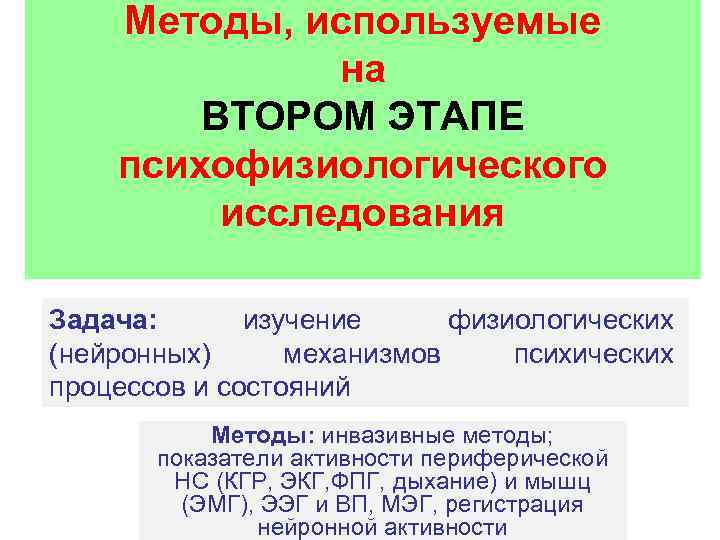 Методы, используемые на ВТОРОМ ЭТАПЕ психофизиологического исследования Задача: изучение физиологических (нейронных) механизмов психических процессов и состояний Методы: инвазивные методы; показатели активности периферической НС (КГР, ЭКГ, ФПГ, дыхание) и мышц (ЭМГ), ЭЭГ и ВП, МЭГ, регистрация нейронной активности
Методы, используемые на ВТОРОМ ЭТАПЕ психофизиологического исследования Задача: изучение физиологических (нейронных) механизмов психических процессов и состояний Методы: инвазивные методы; показатели активности периферической НС (КГР, ЭКГ, ФПГ, дыхание) и мышц (ЭМГ), ЭЭГ и ВП, МЭГ, регистрация нейронной активности
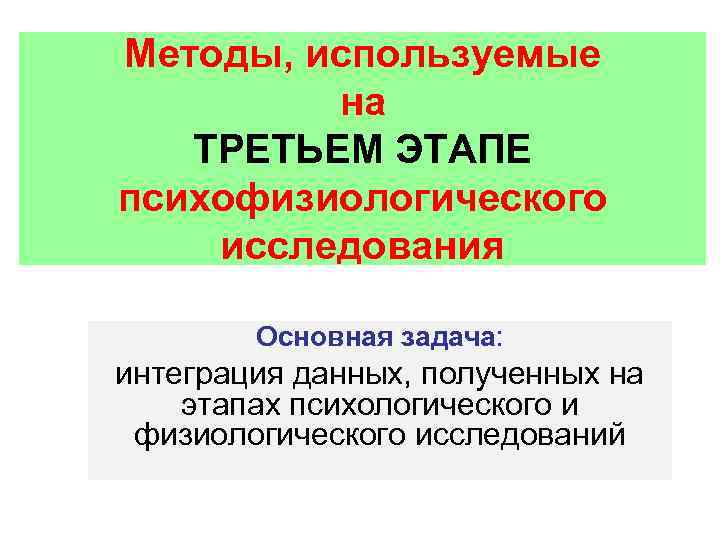 Методы, используемые на ТРЕТЬЕМ ЭТАПЕ психофизиологического исследования Основная задача: интеграция данных, полученных на этапах психологического и физиологического исследований
Методы, используемые на ТРЕТЬЕМ ЭТАПЕ психофизиологического исследования Основная задача: интеграция данных, полученных на этапах психологического и физиологического исследований
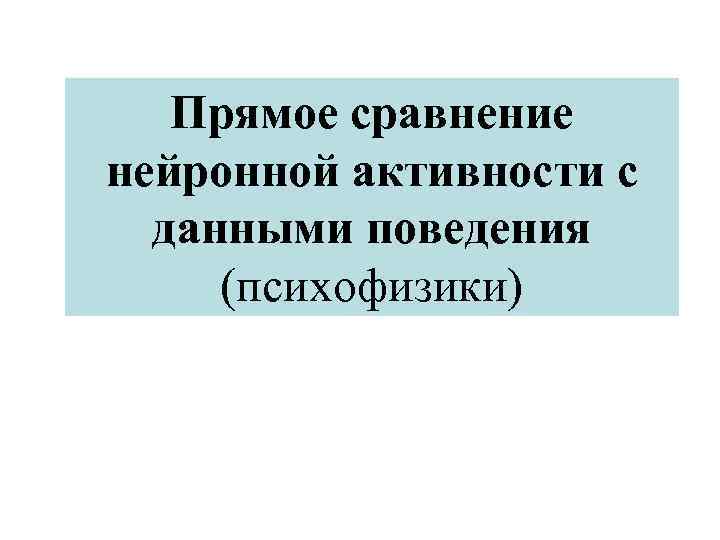 Прямое сравнение нейронной активности с данными поведения (психофизики)
Прямое сравнение нейронной активности с данными поведения (психофизики)
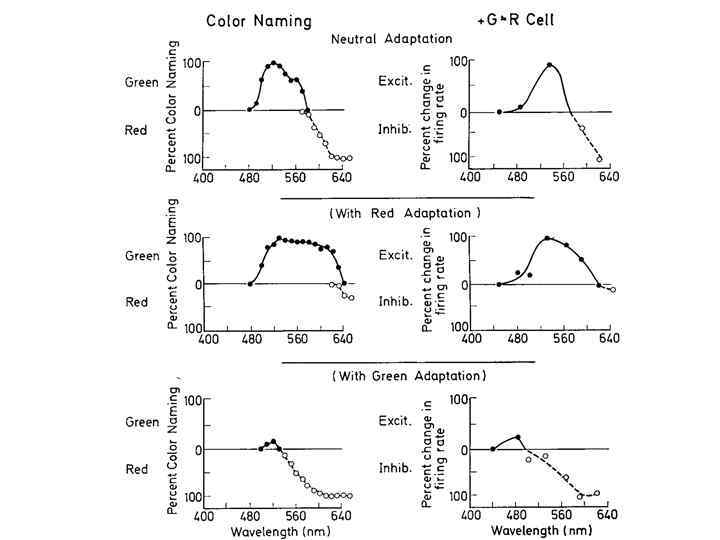
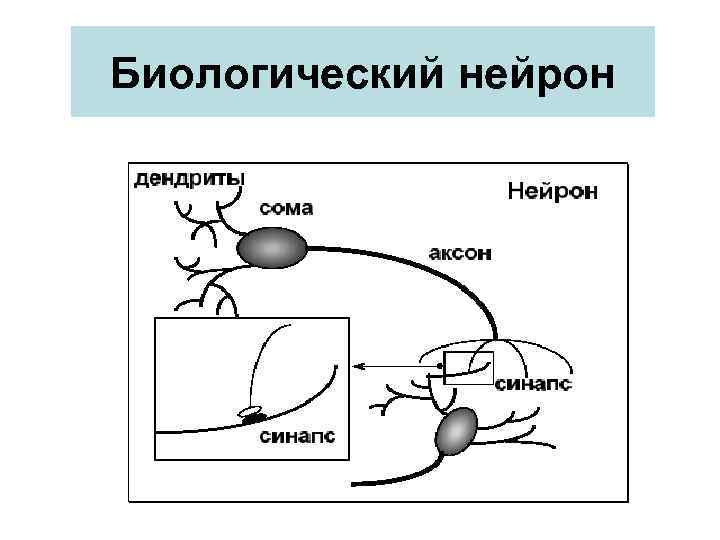 Биологический нейрон
Биологический нейрон
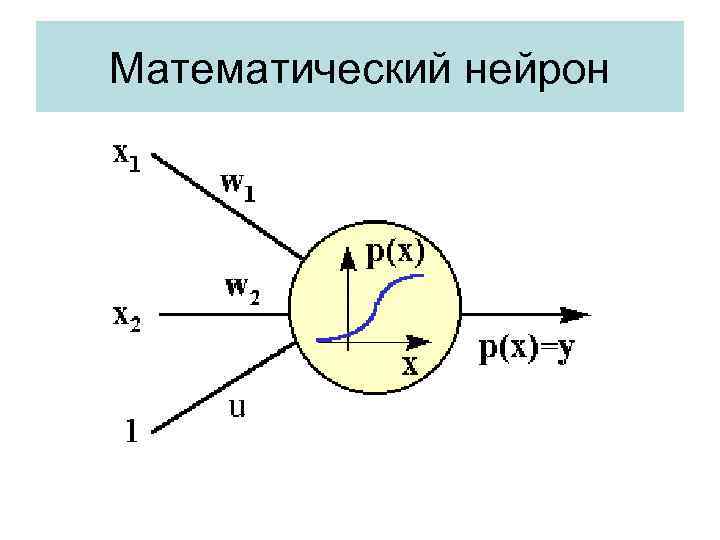 Математический нейрон
Математический нейрон
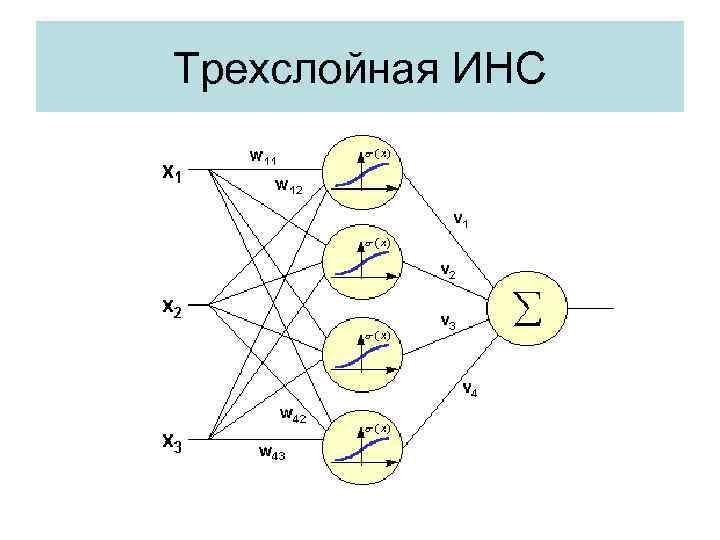 Трехслойная ИНС
Трехслойная ИНС
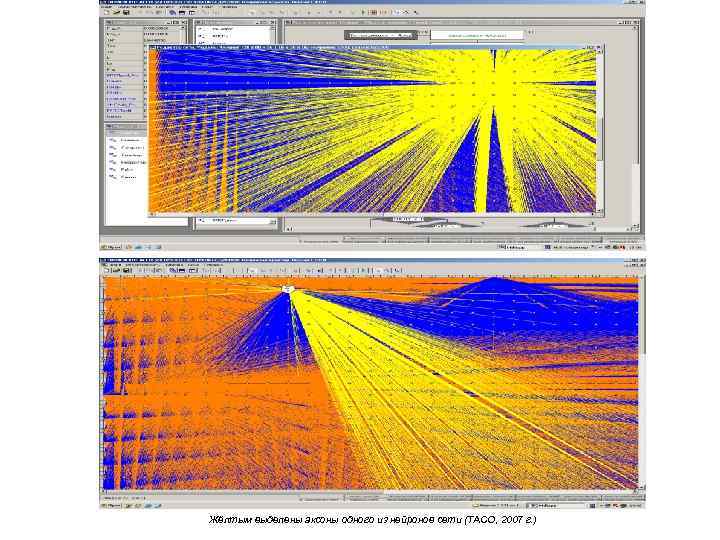 Жёлтым выделены аксоны одного из нейронов сети (ТАСО, 2007 г. )
Жёлтым выделены аксоны одного из нейронов сети (ТАСО, 2007 г. )
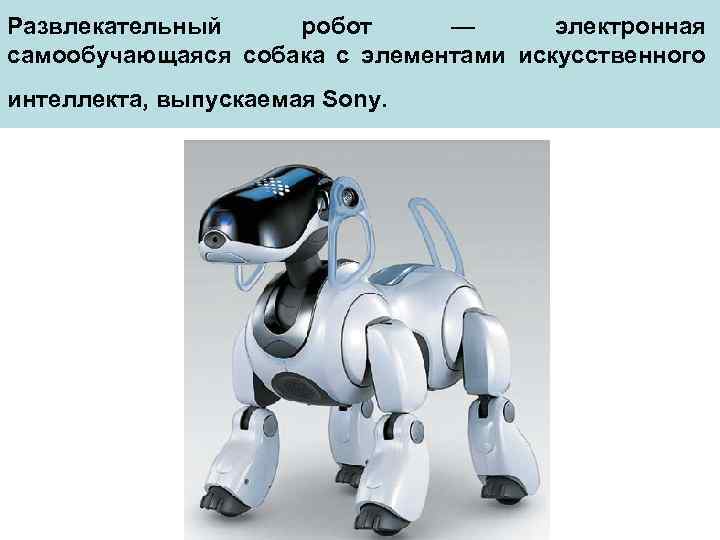 Развлекательный робот — электронная самообучающаяся собака с элементами искусственного интеллекта, выпускаемая Sony.
Развлекательный робот — электронная самообучающаяся собака с элементами искусственного интеллекта, выпускаемая Sony.
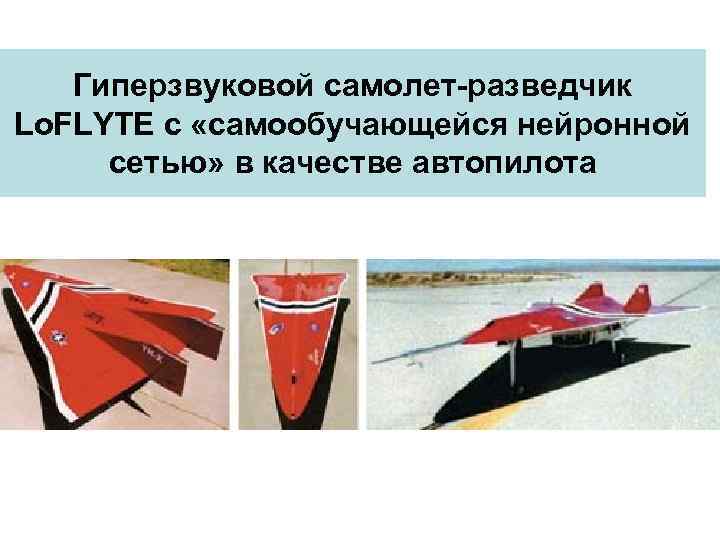 Гиперзвуковой самолет-разведчик Lo. FLYTE с «самообучающейся нейронной сетью» в качестве автопилота
Гиперзвуковой самолет-разведчик Lo. FLYTE с «самообучающейся нейронной сетью» в качестве автопилота
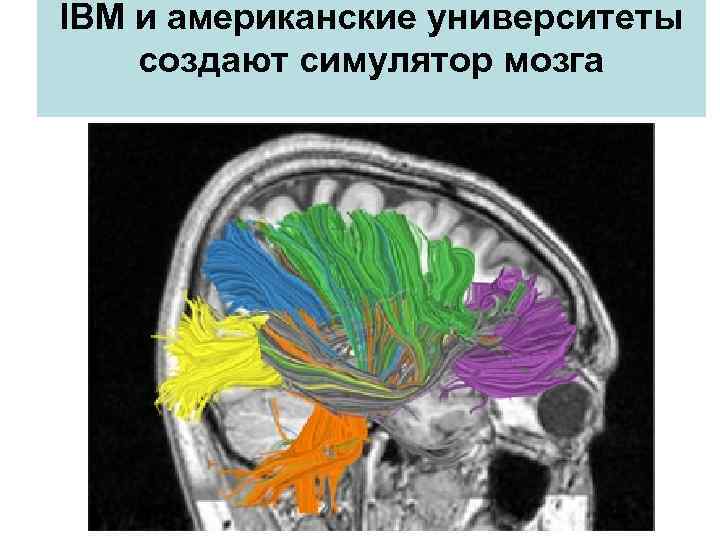 IBM и американские университеты создают симулятор мозга
IBM и американские университеты создают симулятор мозга
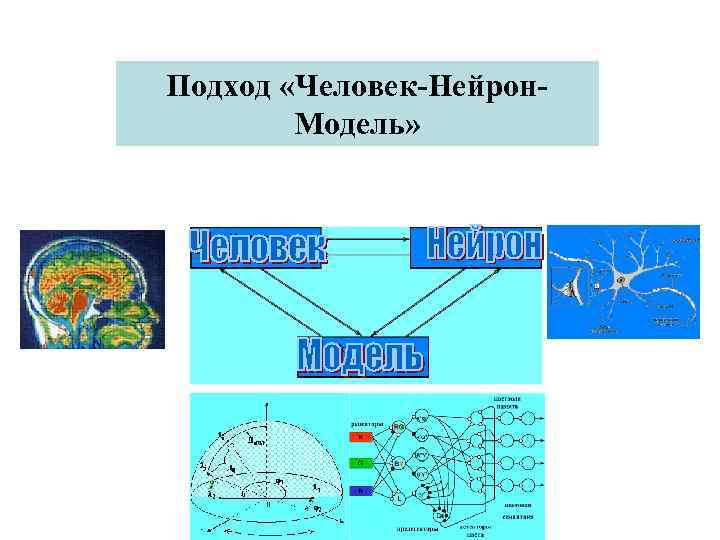 Подход «Человек-Нейрон. Модель»
Подход «Человек-Нейрон. Модель»
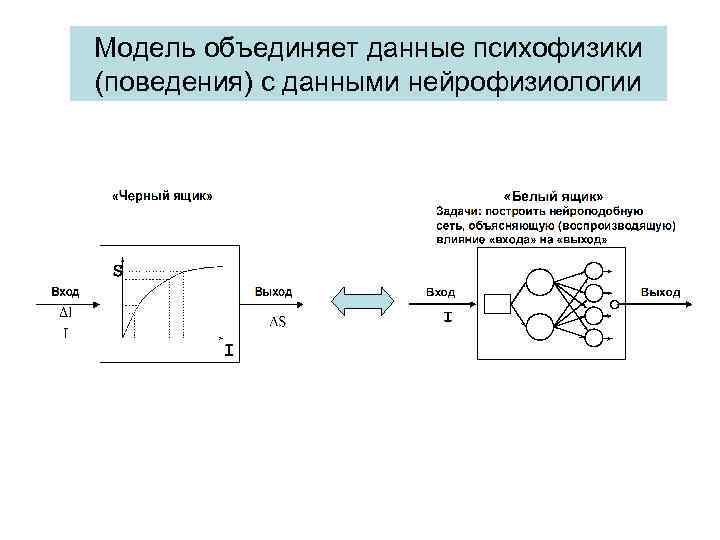 Модель объединяет данные психофизики (поведения) с данными нейрофизиологии
Модель объединяет данные психофизики (поведения) с данными нейрофизиологии
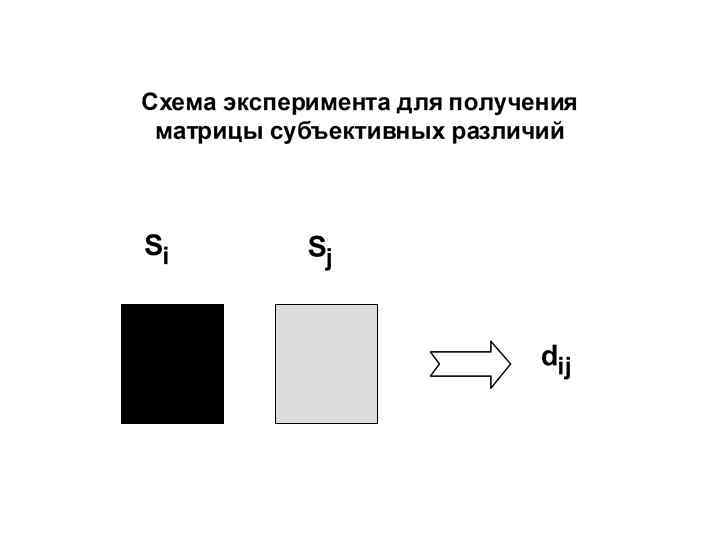
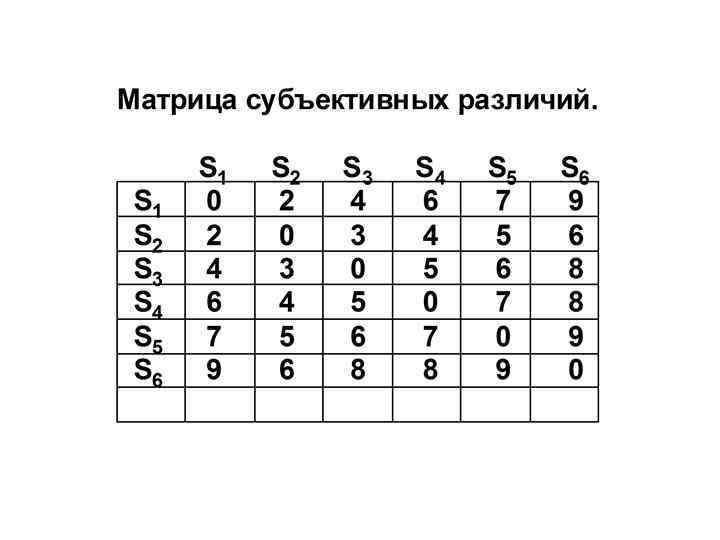
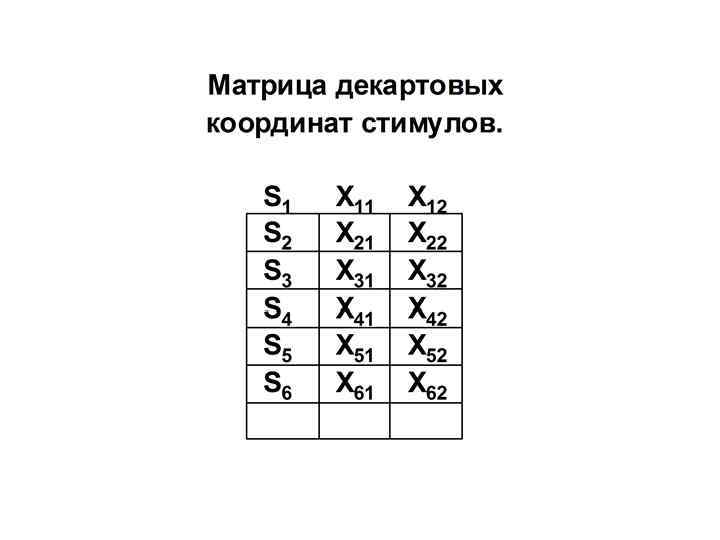
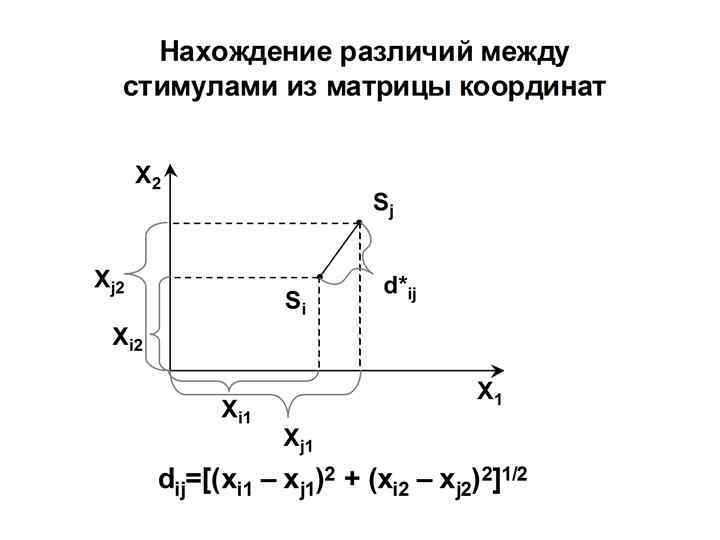
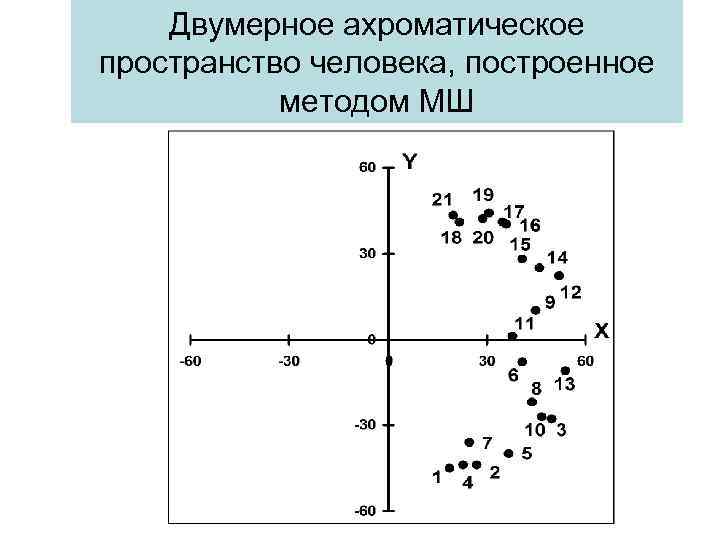 Двумерное ахроматическое пространство человека, построенное методом МШ
Двумерное ахроматическое пространство человека, построенное методом МШ
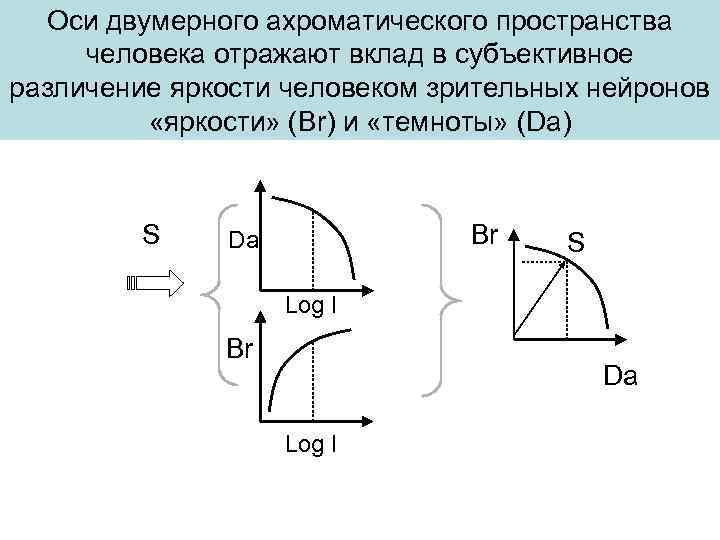 Оси двумерного ахроматического пространства человека отражают вклад в субъективное различение яркости человеком зрительных нейронов «яркости» (Br) и «темноты» (Da) S Br Da S Log I Br Da Log I
Оси двумерного ахроматического пространства человека отражают вклад в субъективное различение яркости человеком зрительных нейронов «яркости» (Br) и «темноты» (Da) S Br Da S Log I Br Da Log I


